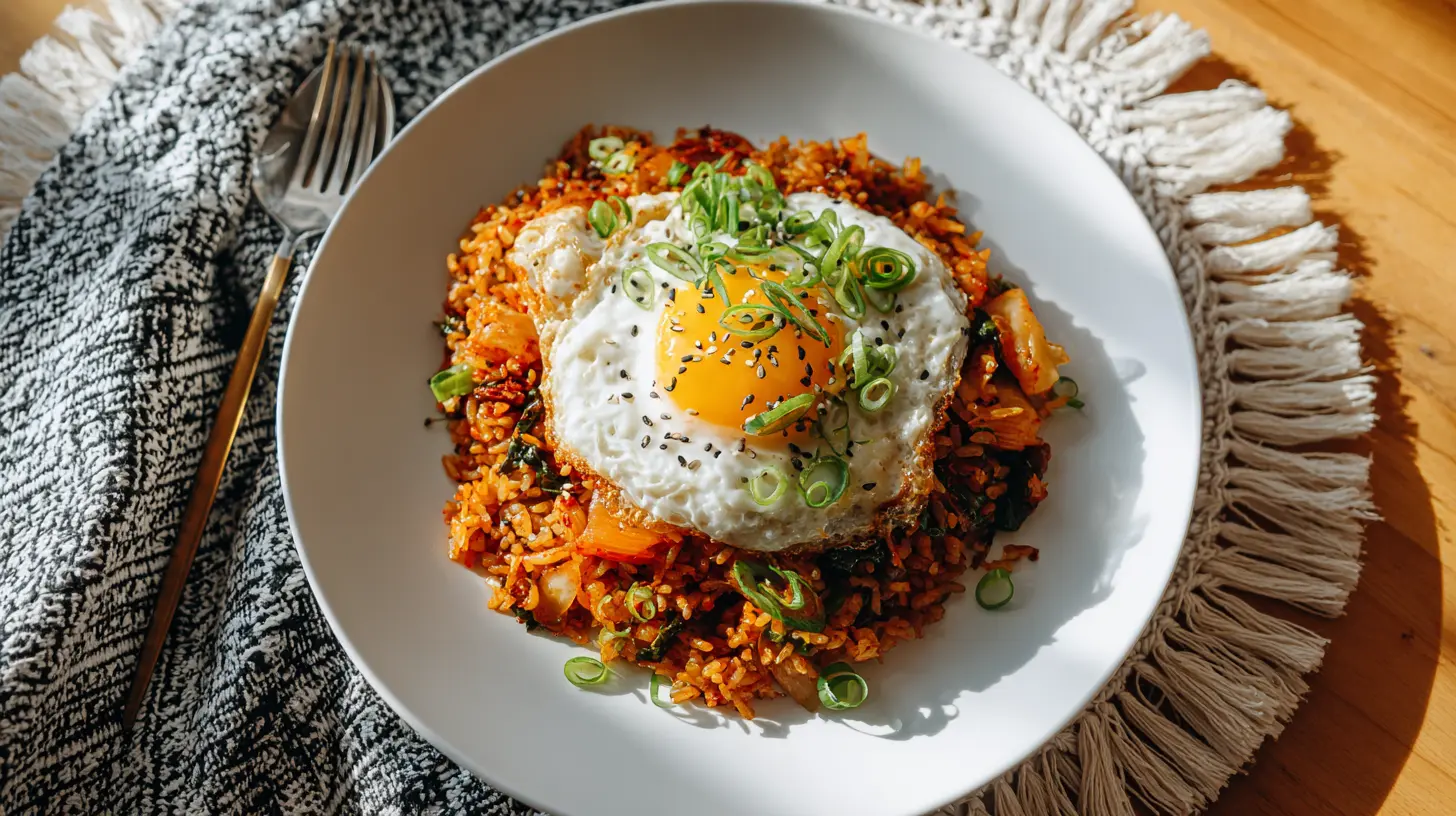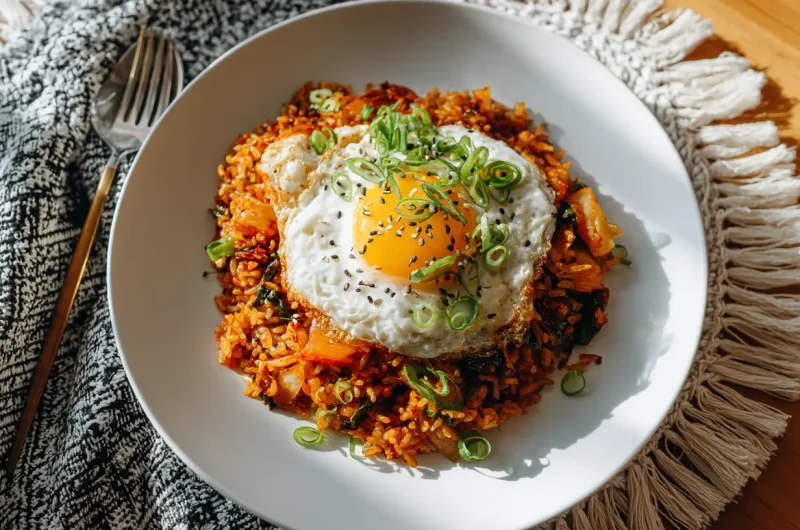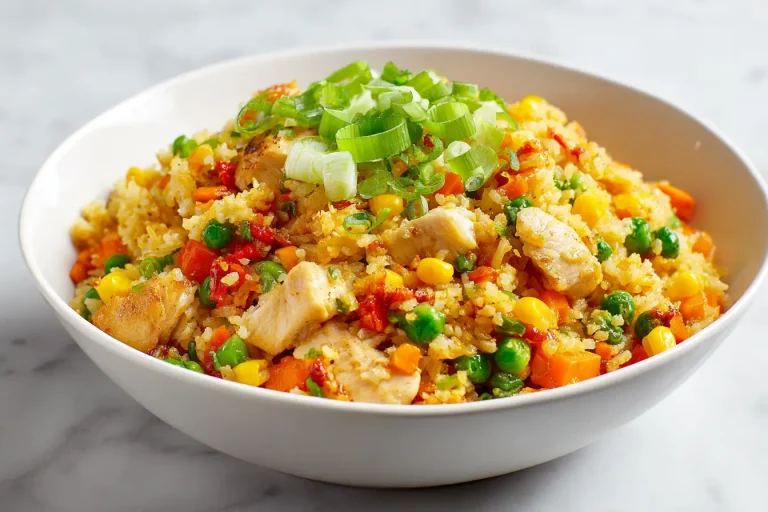Kimchi Fried Rice Recipe – Easy Korean Food Homemade
Kimchi fried rice
Kimchi fried rice is one of those dishes that instantly satisfies on every level: bold flavors, comforting textures, and quick preparation. At its core, it’s a humble stir-fried rice dish made with kimchi and a handful of pantry staples. But what makes it special is the deep, savory, tangy flavor of fermented kimchi, which transforms ordinary rice into something unforgettable. The taste is a balance of spicy, sour, and slightly sweet notes, with layers of umami from seasonings like soy sauce and sesame oil.
This dish is beloved because it’s practical and versatile. In Korean households, it’s the go-to recipe for using up leftover rice and kimchi. Beyond being economical, it’s deeply satisfying, offering a restaurant-level experience right from your own kitchen. Whether you’re craving classic Korean food homemade or simply looking to explore more Asian food at home, kimchi fried rice is an ideal dish to master.
Why You’ll Love This Recipe
As a chef, I can tell you this recipe has several unique strengths that make it stand out:
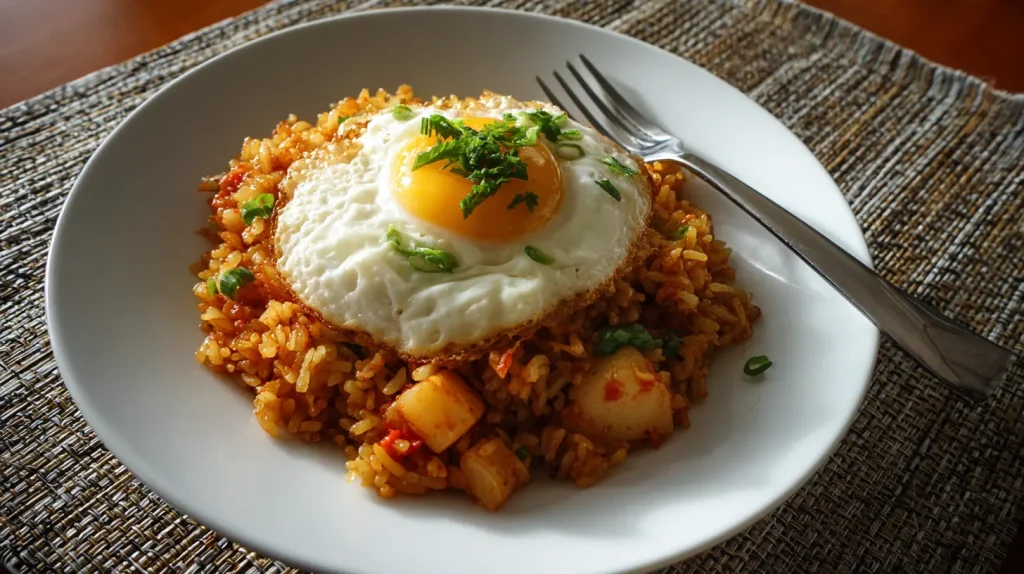
Preparation and Cooking Time
Ingredients
For 2 servings:
Notes on substitutions:
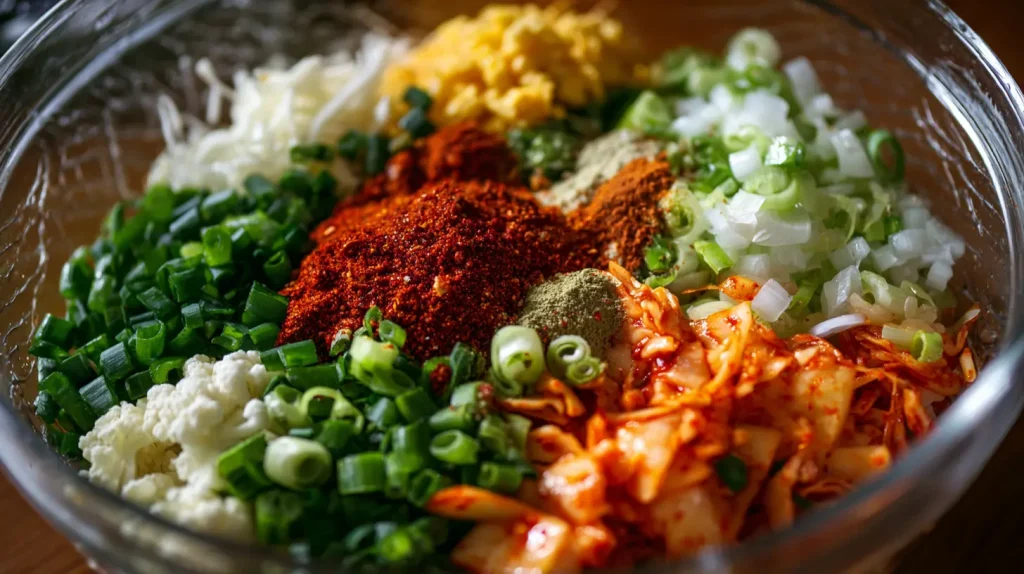
Step-by-Step Instructions
Step 1: Prepare your ingredients
Chop the kimchi into bite-sized pieces. This ensures it blends evenly into the rice and avoids large chunks that overpower bites. Dice the onion, carrots, and scallions. Always set everything out before you begin cooking, because stir-frying moves quickly.
Step 2: Heat the pan properly
Place a large skillet or wok over medium-high heat and add the neutral oil. Heating the pan properly prevents sticking and ensures the vegetables cook evenly.
Step 3: Sauté the aromatics
Add the onion and carrots. Stir-fry for 2–3 minutes until the onion turns translucent. The sweetness from these vegetables balances the sourness of the kimchi.
Step 4: Add the kimchi
Stir in the chopped kimchi and cook for about 2 minutes. This step is crucial cooking the kimchi slightly mellows its sharpness and brings out deeper, savory flavors. Add the kimchi juice for an extra punch.
Step 5: Incorporate the rice
Add the day-old rice to the pan. Use a spatula to break apart clumps. Cold rice works best because the grains remain separate and fry well without turning mushy. Mix thoroughly with the kimchi mixture.
Step 6: Season and enhance
Stir in soy sauce, gochujang (if using), and sesame oil. Toss everything together until evenly coated. This layering of seasoning ensures the rice absorbs both salty and spicy flavors.
Step 7: Fry the eggs
In a separate pan, fry the eggs sunny-side up. The runny yolk acts as a natural sauce when served on top of the rice.
Step 8: Garnish and serve
Top the kimchi fried rice with the fried eggs, sprinkle scallions and sesame seeds over, and serve immediately.
How to Serve
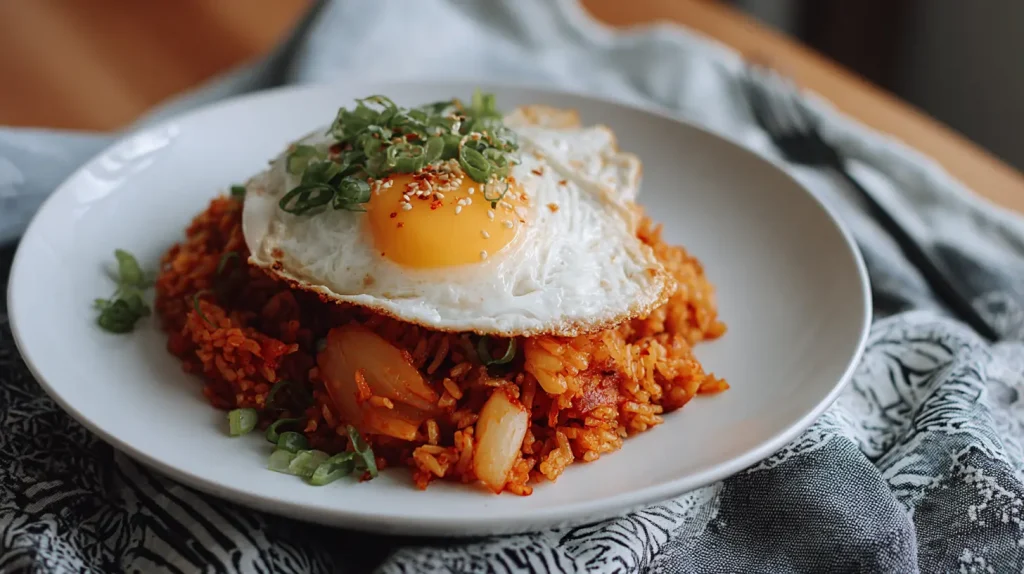
Additional Tips
Recipe Variations
Freezing and Storage
Nutritional Information (per serving, approximate)
Final Words
Cooking kimchi fried rice at home is a rewarding experience. It’s fast, flavorful, and flexible enough to fit into any mealtime. By using healthy kimchi, fresh vegetables, and good-quality rice, you can enjoy one of the most iconic Korean meals healthy and satisfying for everyday life. With practice, this recipe will become a reliable favorite whenever you want something bold, comforting, and undeniably delicious.
FAQ’s
Kimchi Fried Rice Recipe – Easy Korean Food Homemade
Course: Rice Recipes2
servings10
minutes10
minutes420
kcalIngredients
2 cups cooked rice (preferably day-old; short-grain or medium-grain works best)
1 cup kimchi, chopped into small pieces
2 tbsp kimchi juice (from the jar) for added flavor
2 tsp soy sauce
1 tsp gochujang (Korean chili paste; optional but adds depth)
2 tsp toasted sesame oil
1 tbsp neutral oil (canola, vegetable, or avocado oil)
½ cup diced onion
½ cup diced carrots (optional, for sweetness and nutrition)
2 eggs (fried sunny-side up, to serve on top)
2 tbsp scallions, chopped
1 tbsp sesame seeds for garnish
Directions
- Chop the kimchi into bite-sized pieces. This ensures it blends evenly into the rice and avoids large chunks that overpower bites. Dice the onion, carrots, and scallions. Always set everything out before you begin cooking, because stir-frying moves quickly.
- Place a large skillet or wok over medium-high heat and add the neutral oil. Heating the pan properly prevents sticking and ensures the vegetables cook evenly.
- Add the onion and carrots. Stir-fry for 2–3 minutes until the onion turns translucent. The sweetness from these vegetables balances the sourness of the kimchi.
- Stir in the chopped kimchi and cook for about 2 minutes. This step is crucial cooking the kimchi slightly mellows its sharpness and brings out deeper, savory flavors. Add the kimchi juice for an extra punch.
- Add the day-old rice to the pan. Use a spatula to break apart clumps. Cold rice works best because the grains remain separate and fry well without turning mushy. Mix thoroughly with the kimchi mixture.
- Stir in soy sauce, gochujang (if using), and sesame oil. Toss everything together until evenly coated. This layering of seasoning ensures the rice absorbs both salty and spicy flavors.
- In a separate pan, fry the eggs sunny-side up. The runny yolk acts as a natural sauce when served on top of the rice.
- Top the kimchi fried rice with the fried eggs, sprinkle scallions and sesame seeds over, and serve immediately.
Notes
- Always use leftover rice; fresh rice has too much moisture.
- Don’t overload the pan with ingredients this prevents steaming instead of frying.
- If you like smoky flavor, let the rice sit untouched for 20–30 seconds in the pan to create crispy bits.
- Taste the kimchi before cooking older, sourer kimchi makes stronger flavored fried rice.

